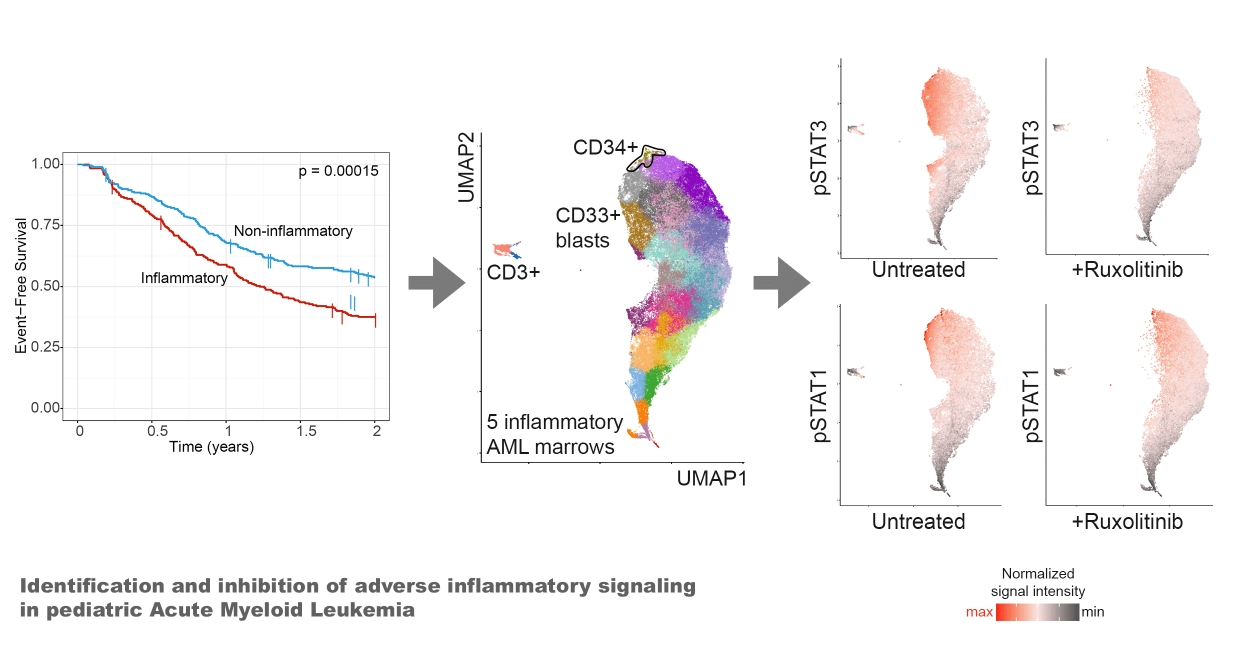In spite of its heavy toll on families and young lives, treatments for pediatric Acute Myeloid Leukemia (pAML) lag far behind other leukemias, and the 10-year survival rate for children with pAML is less than 50%. This is due, in part, to the fact that pAML is a highly heterogeneous disease spanning many clinical, genomic, epigenomic and transcriptional subtypes. While genomic/precision medicine has delivered many successes over the past decade, development of targeted therapies for each of these rare, poor-prognosis pAML subtypes is economically prohibitive.
We recently showed that inflammatory signaling in the bone marrow marks treatment resistance and poor clinical outcomes across multiple pAML subtypes, and that it can be countered with existing drugs (Bolouri et al, Nature Communications 2022).
We are now engaged in establishing the mechanisms driving bone marrow inflammatory signaling and its adverse effects, as well as evaluating the efficacy of candidate drug regimens in pre-clinical models.



